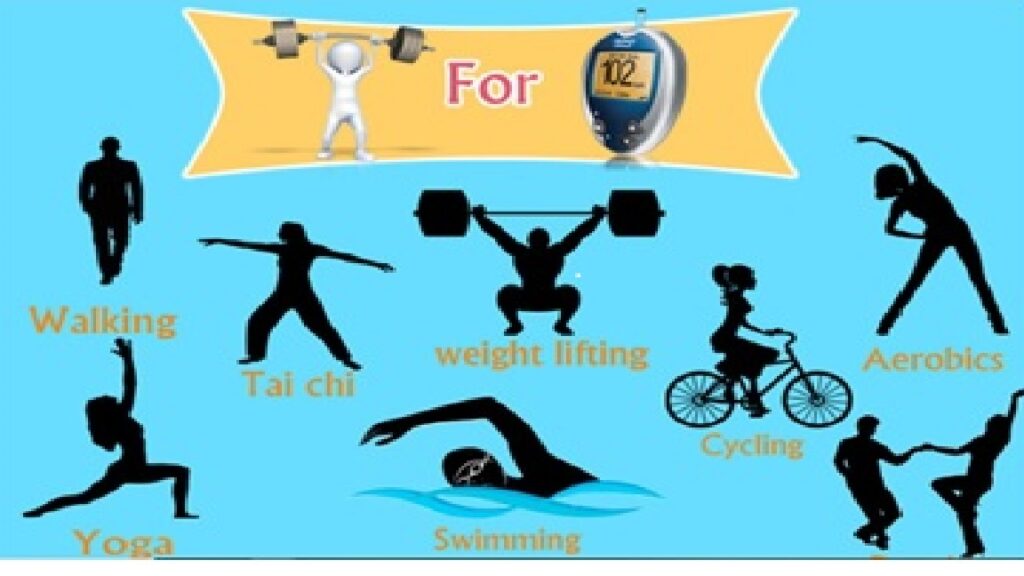Hello everyone!!!! Today let us discuss why exercise is a must in patients suffering from Diabetes Mellitus. There are many patients who come to me and ask that we are exhausted from daily activities and do not get time for workouts or walks. Let me tell you that our day to day activities like cooking, driving, walking small distances for casual work, cutting grass, standing for long hours in teacher profession and bus conductors does not count for exercise. Exercise purely means dedicating time for yourself so that you sweat out after workouts.
Diabetes and Exercise Fitness:
Diabetes and fitness goes hand in hand. Exercises and any kind of sports like cycling, biking, dancing, playing badminton, table tennis, jogging, brisk walks and climbing steps etc can help in daily workouts. One needs to workout at least half an hour to one hour daily.
Pathophysiology:
When we work out, the muscles need energy, fuel to be utilized for our workouts. So there is a lot of sugar/glucose being utilized by the muscles during exercise, which in turn is beneficial in controlling Diabetes and thus preventing its complications like cardiovascular disorders, hypertension and other chronic diseases. Aerobic exercises includes involvement of continuous movement of larger group of muscles. In type 1 diabetes aerobic exercise leads to increase in insulin sensitivity, oxidation of enzymes, compliance of blood vessels, pulmonary function and cardiac output. thus increasing the cardio respiratory fitness and decreases insulin resistance. In type 2 diabetes, aerobic exercise improves the cardiac output, reduces the triglycerides and cholesterol and improves the function of pancreas. Flexibility exercise leads to flexible movements of joints of the body. Flexibility and balance exercises are very important in elderly group of patients.
When a person sweats, there is loss of water fluids from the body. This results in decrease of fluids from the body which should be replenished with fruits and water. So a person suffering from diabetes must have meals at regular small intervals. Yoga can help in improvement of glycemic control, neuropathy symptoms, balance and also help people in controlling borderline Diabetes.
Sedentary Lifestyle
Sedentary Lifestyle hampers the overall activity of the person. This leads to poor glycemic control, obesity and poor metabolism. Prolonged sitting in one place must be avoided. It should be interrupted with intermittent walks every hour or two.
Diabetes in Elderly:
In elderly patients, one must exercise at least 3 to 4 times a week. This helps in utilizing the excess glucose in blood and thus controlling blood sugar levels and preventing further complications like retinopathy, neuropathy, cardiovascular diseases, foot problems like gangrene hypertension and hypercholestremia. Resistance training includes body weights, cardio, lifting weights like dumbles which also helps in reducing sugar levels in our body. Exercise during fasting should be avoided as it will lower your glucose levels below normal which can lead to sudden collapse. Also walks or exercise post meals for 15 minutes can help improve your metabolism in diabetes.
Diabetes in pregnancy:
Diabetes during pregnancy usually occurs in 23 to 28 weeks approximately. Hence exercise during pregnancy is of utmost importance like yoga and meditation. Mild Exercises also help in maintaining the hypertension and help in normal delivery. You should consult your gynaecologist before starting such exercises in pregnancy.
So now we know the importance of exercise in our daily life. Hope everyone enjoyed exercising while reading which lead us one more step ahead for a healthy life style!!!!







